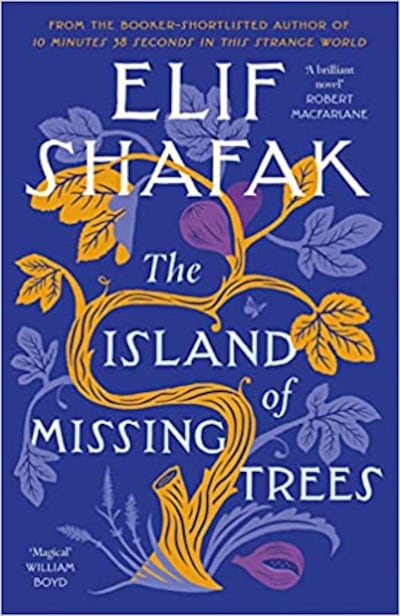This is a wonderful novel. Normally one keeps this comment for the last line of the review, but I am so enthusiastic about The Island of Missing Trees that I want to put my cards on the table straightaway.
Elif Shafak is a British-Turkish writer who writes in both Turkish and English; this novel is written in English. Her oeuvre includes 19 books, 12 of them novels and many bestsellers. 10 Minutes 38 Seconds in This Strange World (2019) was shortlisted for the Booker Prize.
The island of the title is Cyprus. Shafak tells the recent history of this divided country using the time-honoured device of a teenage love story between characters from opposite camps: Kostas is a Greek Cypriot, Defne a Turk. They meet in 1974, the year in which a coup was declared by the Greeks, quickly followed by a Turkish invasion. For the beautiful island, the results were war, atrocities, bloodshed, death, displacement, emigration, and eventually a border dividing it into Greek and Turkish sections.

“All those tourists who travel to the Mediterranean on holiday, they want the sun and the sea and the fried calamari. But no history, please, it’s depressing,” declares Meryam, Defne’s sister, to her niece on a visit to London in 2010.
This novel, however, will give you one of the most entertaining history lessons you have ever had. Moving between 1974 and 2010, with an interlude in 2000, its main characters are Kostas, who in adulthood is a botanist, his grumpy teenage daughter Ada, her aunt Meryam – and a tree.
Ada, perfectly drawn, experiences in-person and online bullying in her north London school in episodes that seem sadly realistic. A surprise visit from aunt Meryam, a traditional Cypriot, spouting proverbs by the dozen (humorously, but not patronisingly, deployed by the author), believer in superstitions, and a fantastic cook, helps Ada to – well, grow up.
Although the novel is rich in themes, its backbone is how Ada comes to terms with the turbulent history of her ancestral island and her own parents , and she could be classified as the main protagonist. The character who steals the show, however, is definitely the fig tree.
“The Happy Fig was a popular hang-out frequented by Greeks, Turks, Armenians, Maronites, UN soldiers and visitors to the island who quickly fell in step with the local ways . . . The entrance of the tavern was partially covered with twisting vines of honeysuckle. Inside, solid blackened beams ran the length and breadth of the ceiling, from which hung garlands of garlic, onion, drying herbs, chilli peppers and cured sausages . . . Nestling in the middle of the tavern, growing through a cavity in the roof, was a tree. ‘A fig!’’’
This describes the tavern in 1974. (Who wouldn’t want to hang out there, and eat the delicious food? There’s a lot of mouth-watering food in this novel.) The fig tree, so picturesquely nestling in this tantalising tavern, intersperses the story with its own commentary. By the time we hear its detailed account of the history of Cyprus in general and of Kostas and Defne in particular, it has moved from the island to a garden in north London, transplanted there by Kostas.
While the dramatic sections of the novel are written in the third person, the tree’s ruminations, which amount to 26 if I have counted correctly, are in the first person, and delivered in a more formal tone than the rest of the novel. It is a wise tree, philosophical, learned and extremely knowledgeable about an enormous range of topics, especially trees and all natural phenomena:
“The last animal in my ecosystem that I remember visiting me before I left the island for good was a mouse . . . Wherever humankind has fought wars, turning fertile lands into battlefields and destroying entire habitats, animals have always moved into the void they left behind.”
Generally I am suspicious of anthropomorphised animals or things in contemporary fiction. They can be tricksy devices cloaking paucity of original thought. Not so here. Chaucer is lauded for making Chanticleer, in The Nonne’s Preeste’s Tale, come across as both an interesting human voice and as a real farmyard fowl. The fig tree here works on both levels too: it’s convincingly arboreal, but has equally believable human traits.
All the characters in the novel are just as strongly drawn. Shafak weaves the strands of her work – history, botany, ecology, human character, folklore – with the powers of a real magician, to create a compelling, eminently readable, fascinating novel. This is fiction at its best. She is a master of her art.
Éilis Ní Dhuibhne’s latest books are Little Red and Other Stories (Blackstaff, 2020) and Look! It’s a Woman Writer! (Arlen House, 2021)










